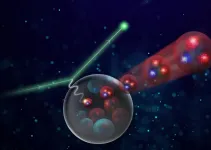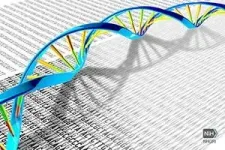Identifying patient-specific differences to treat HCM with precision medicine
Researchers used a novel approach to study hypertrophic cardiomyopathy, looking beyond genetics for clues about the heart condition's underlying biology
2021-02-25
(Press-News.org) Hypertrophic cardiomyopathy (HCM) is a cardiovascular disease characterized by thickening of the left ventricle, otherwise known as the main squeezing chamber of the heart. HCM is best known for causing sudden death in athletes but can occur in persons of any age, often without symptoms. While frequently discussed in the context of genetics, most patients with HCM do not have a known genetic variant. Investigators from Brigham and Women's Hospital uncovered a means to study the complexity of this disease beyond the identification of individual genes. This new approach offers a path toward treating HCM using individualized medicine. In a recent study, investigators analyzed the role protein-protein interactions (PPIs) play in differentiating individual cases of HCM. Their results are published in Nature Communications.
"While genes play a role in HCM, there is more information surrounding this condition that can't be explained with genetics alone," said corresponding author Bradley Maron, MD, a cardiologist in the Division of Cardiovascular Medicine at the Brigham. "This raises the question of whether there are other important components of the disease. With this project, we aim to provide an expanded view of the pathobiology of HCM in a way that doesn't hinge on understanding specific gene mutations."
The team collected tissue from 18 HCM patients recently recruited to receive myectomies, surgical procedures involving the excision of a portion of the heart muscle wall. To identify individual PPIs among the HCM cohort, Maron, co-lead author Ruisheng Wang, PhD, and colleagues analyzed tissue contents using RNA-seq, a technique that allows researchers to identify patterns of where and when genes are active. Through a series of steps, they identified patient-specific PPIs (known as reticulotypes) corresponding to the unique biological characteristics of each patient's disease profile.
The group discovered that they could distinguish individualized protein networks in each patient in the HCM cohort.
"These findings represent a major step forward for precision medicine," said Maron. "With the identification of patient-specific biological wiring maps, researchers may one day develop personalized treatments informed by patients' protein networks."
The study is unique in that researchers studied affected tissue collected directly from HCM patients, allowing for a more robust, accurate way of studying patients' pathobiology than has been performed previously. Maron states, however, that in the future, he hopes to develop less invasive ways to perform this same test, whether it be through the collection of blood samples or through other biomarkers in the clinic. The team additionally aspires to apply this same procedure to other diseases as well, hoping to expand the number of opportunities for precision medicine.
"This study illustrates the complexity of HCM but also offers a clearer path forward for understanding the disease pathobiology with the promise of opportunity for precision medicine in this disease," said Maron.
INFORMATION:
Funding for this work was provided by the National Institutes of Health (1R01HL155096, R56HL131787, R01HL153502, R01HL139613-01, R21HL145420, NHLBI K08128802, NHLBI R01 HL135121-01, NHLBI R01 HL132067-01A1, HG007690, HL119145, HL155107, GM107618, NHLBI: K23 HL150322-01A1), National Scleroderma Foundation, Cardiovascular Medical Research Education Foundation; McKenzie Family Charitable Trust, AHA Heart Failure Strategically Focused Research Network (16SFRN2902000), Nora Eccles Treadwell Foundation; and American Heart Association grants (D700382 and CV-19).
Maron, BA, et al. "Individualized interactomes for network-based precision medicine in hypertrophic cardiomyopathy with implications for other clinical phenotypes" Nature Communications DOI: 10.1038/s41467-021-21146-y
ELSE PRESS RELEASES FROM THIS DATE:
2021-02-25
While protons populate the nucleus of every atom in the universe, sometimes they can be squeezed into a smaller size and slip out of the nucleus for a romp on their own. Observing these squeezed protons may offer unique insights into the particles that build our universe.
Now, researchers hunting for these squeezed protons at the U.S. Department of Energy's Thomas Jefferson National Accelerator Facility have come up empty handed, suggesting there's more to the phenomenon than first thought. The result was recently published in Physical Review Letters.
"We were looking to squeeze the proton such that its quarks are in a small-size configuration. And that's a pretty tough ...
2021-02-25
A University of Oklahoma-led study published in 2020 revealed that both area and plant growth of paddy rice is significantly related to the spatial-temporal dynamics of atmospheric methane concentration in monsoon Asia, where 87% of the world's paddy rice fields are situated. Now, the same international research team has released a follow-up discussion paper in the journal Nature Communications. In this paper, the team identifies the limits and insufficiency of the major greenhouse emission database (EDGAR) in estimating paddy rice methane emissions.
"Methane emission from paddy ...
2021-02-25
EL PASO, Texas - A study by physiology researchers at The University of Texas at El Paso found that El Paso's stay-at-home ordinance due to the COVID-19 pandemic had positive effects on the health and well-being of the region's residents.
Despite a shutdown of gyms and movement restrictions on non-essential activities, residents increased their fitness activity and closely monitored their food and nutrition intake, said Cory M. Smith, Ph.D., assistant professor of kinesiology in UTEP's College of Health Sciences and the study's principal investigator.
More than 1,300 El Paso and ...
2021-02-25
Researchers at the University of Maryland School of Medicine (UMSOM) co-authored a study, published today in the journal Science, that details the sequencing of 64 full human genomes. This reference data includes individuals from around the world and better captures the genetic diversity of the human species. Among other applications, the work will enable population-specific studies on genetic predispositions to human diseases as well as the discovery of more complex forms of genetic variation.
Twenty years ago this month, the International Human Genome Sequencing Consortium announced the first draft of the human genome reference sequence. The Human Genome Project, as it was called, required 11 years of work and involved more than 1000 ...
2021-02-25
Psychologists have long found that people behave differently than when they learn of peers' actions. A new study by computer scientists found that when individuals in an experiment about autonomous vehicles were informed that their peers were more likely to sacrifice their own safety to program their vehicle to hit a wall rather than hit pedestrians who were at risk, the percentage of individuals willing to sacrifice their own safety increased by approximately two-thirds.
As computer scientists train machines to act as people's agents in all sorts of situations, the study's authors indicate that the social component of decision-making is often overlooked. This could be of great consequence, note the paper's authors who show that the trolly problem -long shown to be ...
2021-02-25
States regularly use administrative records, such as motor-vehicle data, in determining whether people have moved to prune their voter rolls. A Yale-led study of this process in Wisconsin shows that a significant percentage of registered voters are incorrectly identified as having changed addresses, potentially endangering their right to vote.
The study, published in the journal Science Advances, found that at least 4% of people listed as suspected "movers" cast ballots in 2018 elections using addresses that were wrongly flagged as out of date. Minority voters were twice as likely as white voters to cast their ...
2021-02-25
The COVID-19 virus holds some mysteries. Scientists remain in the dark on aspects of how it fuses and enters the host cell; how it assembles itself; and how it buds off the host cell.
Computational modeling combined with experimental data provides insights into these behaviors. But modeling over meaningful timescales of the pandemic-causing SARS-CoV-2 virus has so far been limited to just its pieces like the spike protein, a target for the current round of vaccines.
A new multiscale coarse-grained model of the complete SARS-CoV-2 virion, its core genetic material and virion shell, has been developed for the first time using supercomputers. The model offers ...
2021-02-25
Litter is not only a problem on Earth. According to NASA, there are currently millions of pieces of space junk in the range of altitudes from 200 to 2,000 kilometers above the Earth's surface, which is known as low Earth orbit (LEO). Most of the junk is comprised of objects created by humans, like pieces of old spacecraft or defunct satellites. This space debris can reach speeds of up to 18,000 miles per hour, posing a major danger to the 2,612 satellites that currently operate at LEO. Without effective tools for tracking space debris, parts of LEO may even become too hazardous for satellites.
In a paper publishing today in the SIAM Journal on Imaging Sciences, Matan Leibovich (New York University), George Papanicolaou (Stanford University), and Chrysoula Tsogka (University of California, ...
2021-02-25
The unprecedented cost of the 2018 Kilauea eruption in Hawai'i reflects the intersection of distinct physical and social phenomena: infrequent, highly destructive eruptions, and atypically high population growth, according to a new study published in Nature Communications and led by University of Hawai'i at Mānoa researchers.
It has long been recognized that areas in Puna, Hawai'i, are at high risk from lava flows. This ensured that land values were lower in Puna--which lies within the three highest risk lava hazard zones 1, 2 and 3--which actively promoted rapid population ...
2021-02-25
Our body consists of 100 trillion cells that communicate with each other, receive signals from the outside world and react to them. A central role in this communication network is attributed to receiver proteins, called receptors, which are anchored at the cell membrane. There, they receive and transmit signals to the inside of the cell, where a cell reaction is triggered.
In humans, G protein-coupled receptors (GPC receptors) represent the largest group of these receptor molecules, with around 700 different types. The research of the Frankfurt and Leipzig scientists focused on a GPC receptor that serves as a receptor for the ...
LAST 30 PRESS RELEASES:
[Press-News.org] Identifying patient-specific differences to treat HCM with precision medicine
Researchers used a novel approach to study hypertrophic cardiomyopathy, looking beyond genetics for clues about the heart condition's underlying biology




